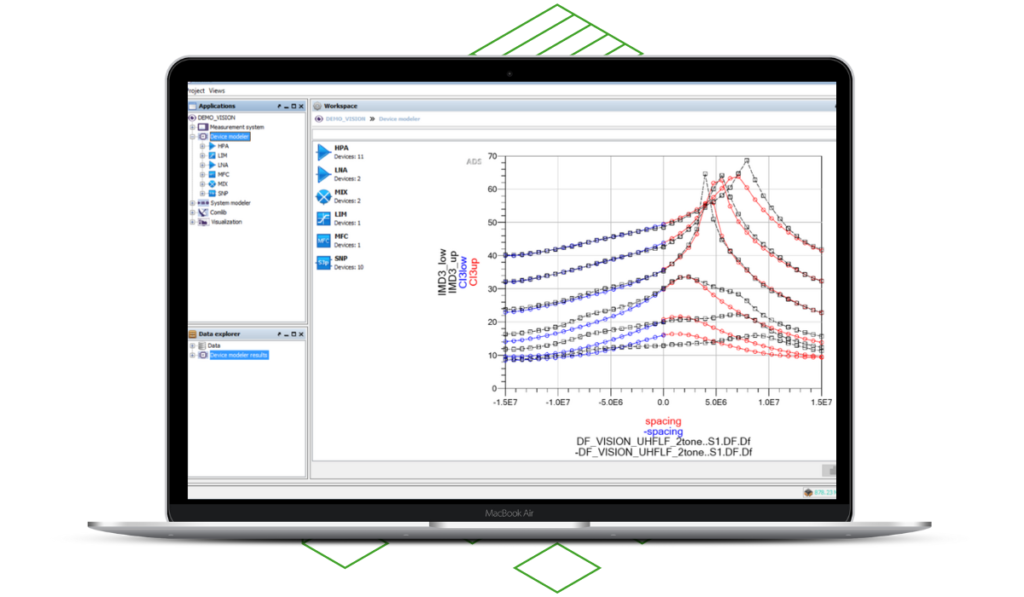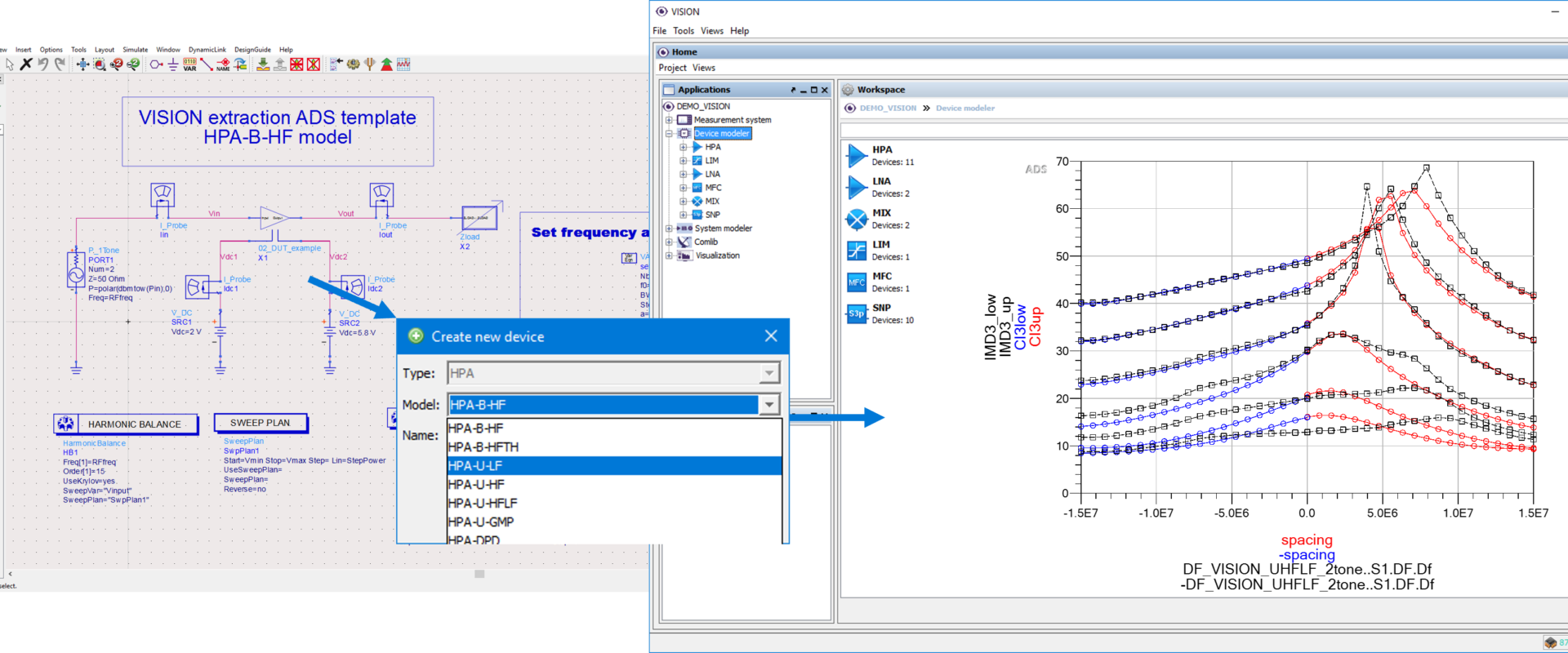
When designing a Power Amplifier, it is useful to validate the design in realistic input signal conditions, especially with modulated signals. Generating an accurate model that allows time-domain simulation helps optimize the performance in a very short time.
How does the PA design optimization tool help you solve well-known problems?
- No more compromise between simulation speed and test-signal complexity: Ultra-fast time-domain simulation using Data-Flow Simulator allows a realistic evaluation using modulated test signals.
- The bottom-up validation of the system design’s performance is possible: thanks to the VISION model, the compromise between precision and computation speed allows a fine analysis at the system level using the electrical performances of the analog circuits composing it.
- Behavioural model extraction can be done using circuit design and a circuit simulator. Then the model can be exported to a system simulator, thus avoiding tedious co-simulation: use basic model extraction templates and quickly obtain a model that can be used in a commercial or “house-made” system simulator.
The little extras you’ve been waiting for
- New metrics previously accessible only through measurements are now usable by the designer. Without VISION, the models’ speed, convergence, and precision represent an analysis barrier that often results in simpler input signals for basic implementation.
- The solution is compatible with different suppliers of CAD tools. VISION allows models to be aggregated from different CAD media or even instrumentation.
- Circuit and system model validation reduces design iterations: thanks to VISION’s various model validation tools, take control of your design iterations..
- Circuit and system model validation reduces design iterations: thanks to the various model validation tools available in VISION, take control of your design iterations.
- Multiple phenomena integrated into the same model: be sure to describe as simply as possible the behaviour you observe thanks to the multiple choices of model structure.

